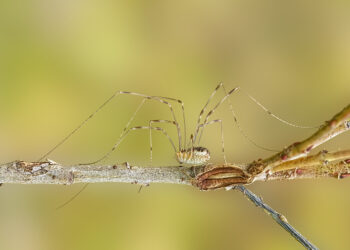Joining sounds together to create a meaningful language was thought to be a human characteristic, but a new study published in PLoS Biology found that blabber birds also developed their own phonetic language, just like we did! Researchers also believe that studying these birds could give us hints of why and how our language evolved to what it is today.

Biologists studying these social birds learned that they too can arrange meaningless sounds to form messages. Their discovery may reveal a potential early step in the emergence of the elaborate language systems we use today. By now you’re probably asking yourself – don’t parrots do the same thing? Well, that’s a logical question, but the answer is no, parrots don’t do the same thing. Parrots are very good at imitating, but it’s not clear that they understand what they’re saying, and it’s not clear that they can create new messages with the sounds they know. So what makes these birds special?
First of all, babbler birds have fifteen different sounds which they use for specific situations. To make things even more interesting, they sometimes use these sounds in pairs for even more specific situations, and they also use the same sounds but with slightly changed forms to send a very different meaning. In other words, they have sounds with they use to send a meaningful, genuine message. Lead author Sabrina Engesser from the University of Zurich said:
“Although previous studies indicate that animals, particularly birds, are capable of stringing different sounds together as part of a complex song, these songs generally lack a specific meaning and changing the arrangement of sounds within a song does not seem to alter its overall message.”
Just to clarify things – they emit sounds, but they don’t sing.
“In contrast to most songbirds, chestnut-crowned babblers do not sing. Instead its extensive vocal repertoire is characterised by discrete calls made up of smaller acoustically distinct individual sounds.” she added.
“We think that babbler birds may choose to rearrange sounds to code new meaning because doing so through combining two existing sounds is quicker than evolving a new sound altogether.” said co-author Professor Andy Russell from the University of Exeter who has been studying the babblers since 2004.
Scientists have long searched for clues like this elsewhere in the animal kingdom, and they’ve found them here and there. Studies on Campbell’s monkeys revealed that they have two specific predator alarm calls which they can change into a general distress call by adding a single suffix. However, this signifies that they are still in the very early stages of developing a language.
Let’s take an example: say you have three sounds: A, B, and T. You can arrange them in several ways, you can say TAB, BAT, AT, and even things like BABA to mean different things – this is how languages are formed, and these babbler birds seem to be pretty good at it already. This is the first time any animal has demonstrated language.
“To our knowledge, this is the first demonstration that animals have the basic capacity to use phoneme-like contrasts to derive qualitatively new meaning, a basic component of phoneme structuring,” the authors wrote.
Of course, more studies are required before we actually have confirmation of this, but this is extremely exciting news, potentially revolutionizing what we know about animal language.
Journal Reference: Engesser S, Crane JMS, Savage JL, Russell AF, Townsend SW (2015) Experimental Evidence for Phonemic Contrasts in a Nonhuman Vocal System. PLoS Biol 13(6): e1002171. doi:10.1371/journal.pbio.1002171.






